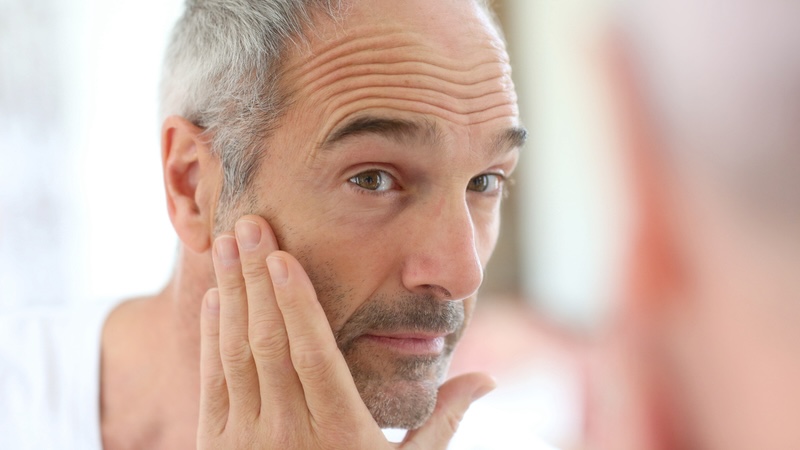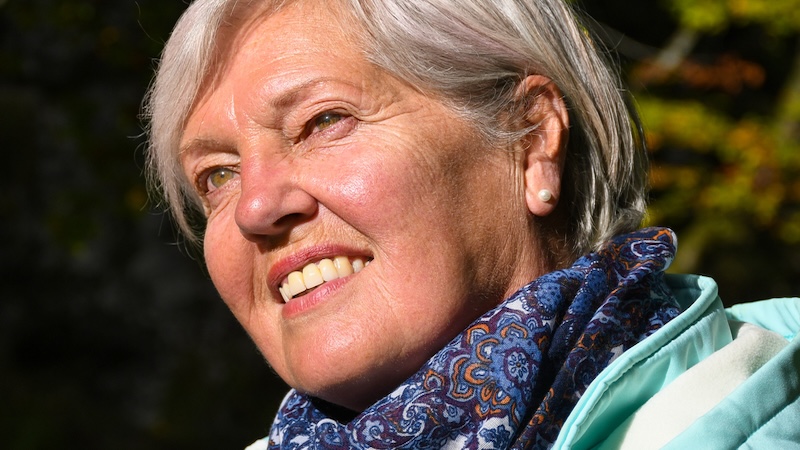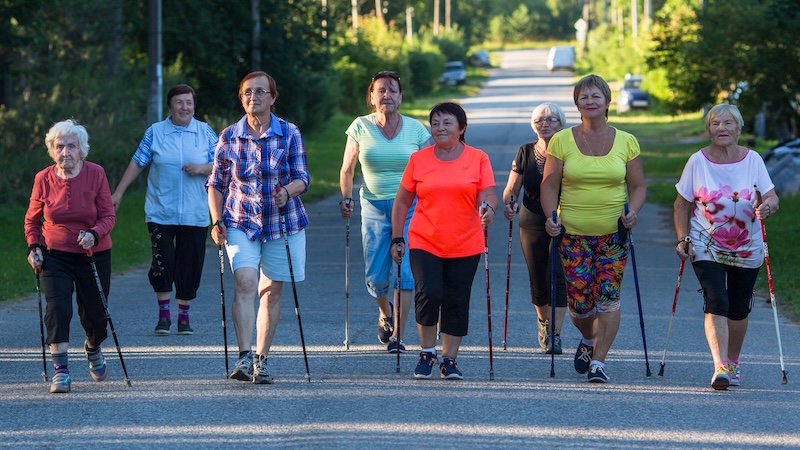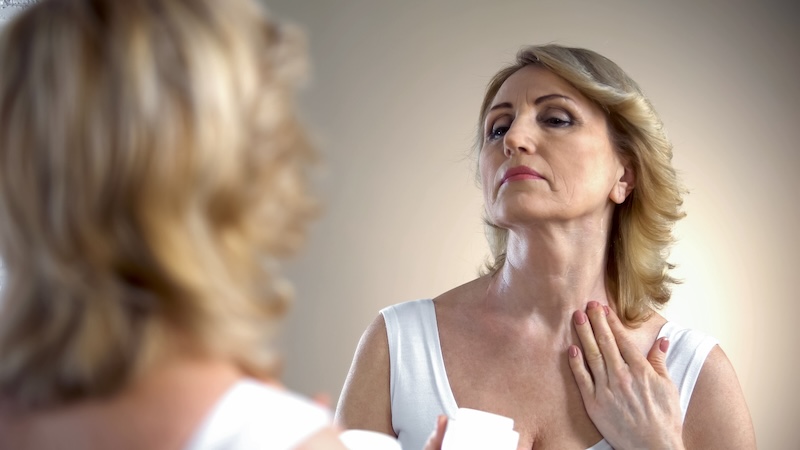A Quick Routine to Check for Skin Cancer
How to examine yourself from head to toe

Skin cancer can happen to anyone, especially older adults, those with weakened immune systems, and people who have had high exposure to UV rays. Dr. Howard LeWine of Harvard Health describes an easy routine to self-check for skin cancer.
Question: I have very fair skin and worry about developing skin cancers. What’s a good routine to periodically check my skin? What should I look for?
Answer: To detect skin cancer early, examine your skin all over your body and watch for changes over time. Use a full-length mirror, plus a handheld mirror for hard-to-see spots, and a magnifying glass to examine smaller areas. Here’s how to do it.
- Look at your face, neck, ears (especially behind them), and scalp. Use a comb or a blow dryer to move your hair so that you can see better.
- Look at the front and back of your body in the mirror. Then, raise your arms and look at your left and right sides.
- Bend your elbows. Look carefully at your fingernails, palm and back of each hand, forearms (including the undersides), and upper arms.
- Check the back, front, and sides of your legs. Also, check the skin all over your buttocks and genital area.
- Sit and examine your feet, including the soles of your feet, the spaces between your toes, and your toenails.
- Note any new or questionable moles, sores, painful spots, raised or firm bumps, dark flaky patches, and black or brown lines along fingernails and toenails. Make sure to feel any suspicious areas for firmness, too. It’s common to feel something troubling before you see it. Write down what you find, including their locations, and when possible take photos.
Melanoma is the most dangerous type of skin cancer, and the earlier you can catch it, the better the outcome. The first sign of melanoma may be a change in an existing mole. However, it also may appear as a new mole. To recognize possible melanoma, follow the ABCDE guide:
- Asymmetry: the shape of one half doesn’t match the other half
- Border: ragged or blurred edges
- Color: red, brown, blue, black, or white, and the shades may be uneven
- Diameter: about a quarter of an inch or larger, although some can be smaller
- Evolution: any changes in size, shape, or color.
Here are some other skin issues to look out for during your self-exam:
- Actinic keratoses (AKs) are rough and gritty growths. They can be flat or slightly raised and appear in different colors, such as red, tan, pink, skin-colored, brown, or silver. AKs often appear on the face, tips of the ears, bald spots, and backs of the arms and hands.
- Basal cell carcinoma (BCC) and squamous cell carcinoma (SCC) are typically slow-growing skin cancers. BCC may look like a bleeding pimple, an open sore, a red patch, a shiny pink growth, or a scar. SCC resembles a crusted, scaly red bump, patch, or wart. Both cancers appear in areas frequently exposed to the sun.
Howard LeWine, M.D., is an internist at Brigham and Women’s Hospital in Boston and assistant professor at Harvard Medical School. For additional consumer health information, please visit www.health.harvard.edu.
©2025 Harvard University. For terms of use, please see https://www.health.harvard.edu/terms-of-use. Distributed by Tribune Content Agency, LLC.


